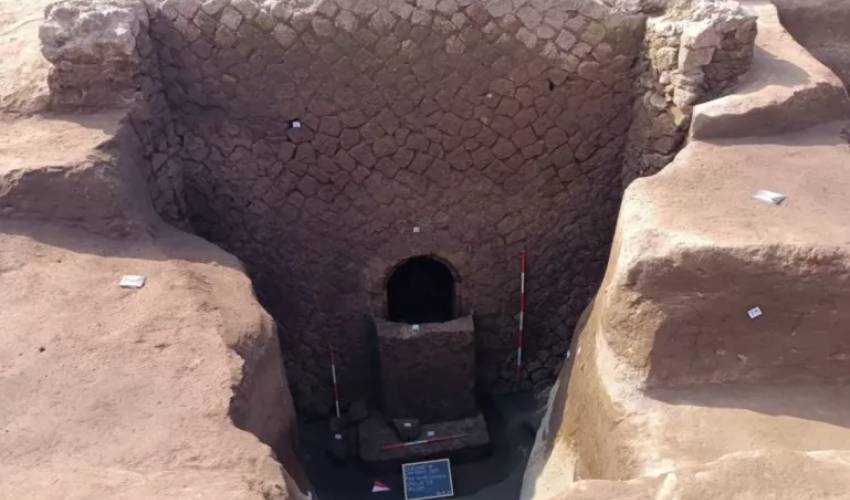The tomb, which is in near perfect condition, was discovered during archaeological surveys ahead of construction works in the municipality of Giugliano in Campania, near Naples.
Inside the tomb, archaeologists found many frescoes covering the walls depicting various scenes from ancient mythology.
One painting represents the three-headed dog, Cerberus—a creature from Greek mythology, described as the hound of Hades, the god of the underworld. In mythology, Cerberus famously guarded the gates to the underworld.

Other frescoes show more scenes from Greek mythology, including one featuring ichthyocentaurs—sea creatures that had the upper body of a human, the lower body of a horse, and the tail of a fish.

Experts believe that the tomb belonged to a wealthy person, as burial practices 2,000 years ago were often grand, depending on the person being buried.
Archaeologists will continue to excavate the tomb in order to learn more about its history and purpose.
The discovery of the tomb is significant because it provides new insights into the lives and beliefs of the ancient Romans. The frescoes also offer a rare glimpse into the art and culture of the time.



























